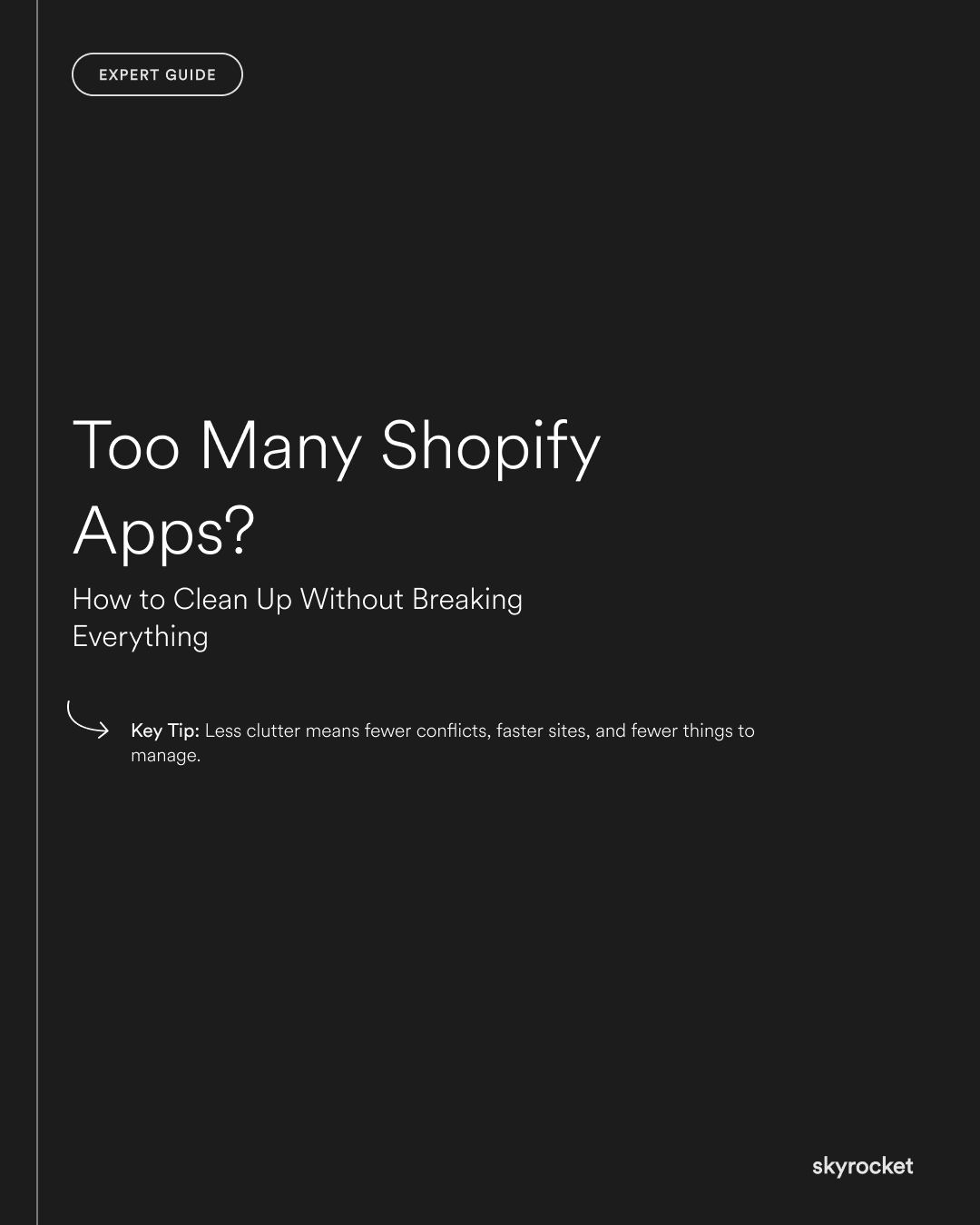Most Shopify store owners start with the best intentions. You add an app to improve the checkout, another for reviews, one for shipping, another for upsells. Before you know it, you’ve stacked 20 apps on top of each other. Sales are steady, but the site feels slower, bugs appear more often, and monthly fees creep higher.
The problem isn’t that apps are bad. It’s that too many apps create friction for customers and headaches for your team. And because Shopify apps are often interconnected, removing them can feel like pulling a thread in a sweater — you don’t know what else might unravel.
Why this matters for your business
Your Shopify site is your sales engine. Every extra second it takes to load costs you conversions. Every bug undermines trust. Every unnecessary subscription chips away at your margins.
Cleaning up your apps is not just about saving money. It’s about:
- Improving site speed so customers stick around and buy.
- Reducing risks of checkout-breaking bugs.
- Cutting ongoing costs without losing valuable functionality.
- Giving your team a simpler, more reliable system to work with.
Key Tip: It sounds counterintuitive, but the most profitable Shopify stores don’t use dozens of apps. They use a carefully chosen handful that do the job well. Less clutter means fewer conflicts, faster sites, and fewer things to manage.
A practical guide to cleaning up Shopify apps
Step 1: Audit your current apps
Make a full list of every app installed. Include what it does, how often it’s used, and what it costs. Many businesses are surprised by how many apps are sitting unused but still racking up fees.
Step 2: Identify duplicates
It’s common to have two or three apps that overlap. For example, one app might handle reviews and another adds star ratings, even though one solution could cover both.
Step 3: Check performance impact
Use Shopify’s built-in performance reports or tools like Google PageSpeed Insights to see which apps are slowing things down. A slow store is a silent revenue killer.
Step 4: Prioritise business-critical apps
Some apps are essential to how you sell — like payment gateways or shipping calculators. Keep those. The rest need to justify their place.
Step 5: Plan safe removals
Never just delete an app. Check what it touches. Does it add scripts to your theme? Does it change checkout? Does it hold customer data? Always back up your theme and test after each removal.
Step 6: Explore native Shopify features
Shopify now includes many features that used to require apps, like basic discounts, analytics, and even some customisation options. Check if you can replace an app with built-in functionality.
Step 7: Consolidate where possible
Choose multi-feature apps that replace several smaller ones. For example, an all-in-one marketing app can often handle popups, email capture, and upsells without three separate installs.
Real-world example
A NZ fashion retailer noticed their store was running slowly and cart abandonment was high. They had 27 apps installed, including three different discount apps. By auditing and consolidating, they cut down to 12 apps. Site speed improved, checkout worked more smoothly, and the monthly app bill dropped by 40 percent. Sales went up within weeks, not because of a new feature, but because the site finally worked as intended.
Common misconceptions
“Removing apps will break everything.”
Not if you do it properly. With backups and testing, you can safely remove apps without harming your core store.
“We need apps for every feature.”
Not anymore. Shopify’s built-in features have expanded significantly in recent years. Many stores are paying for apps they don’t need.
“More apps means more capability.”
Actually, more apps often means more conflicts, more bugs, and more costs. Capability comes from the right tools, not the most tools.
What to do now
- List all apps currently installed and their monthly costs.
- Highlight duplicates or underused apps.
- Run a site speed test before and after disabling apps.
- Backup your theme before removing anything.
- Replace multiple apps with native Shopify features or multi-feature apps where possible.
Your Shopify store should be simple, fast, and reliable. If it feels overloaded with apps, you’re probably paying too much and losing sales along the way. If you’d like an expert review of your app stack, we’re always happy to chat.



